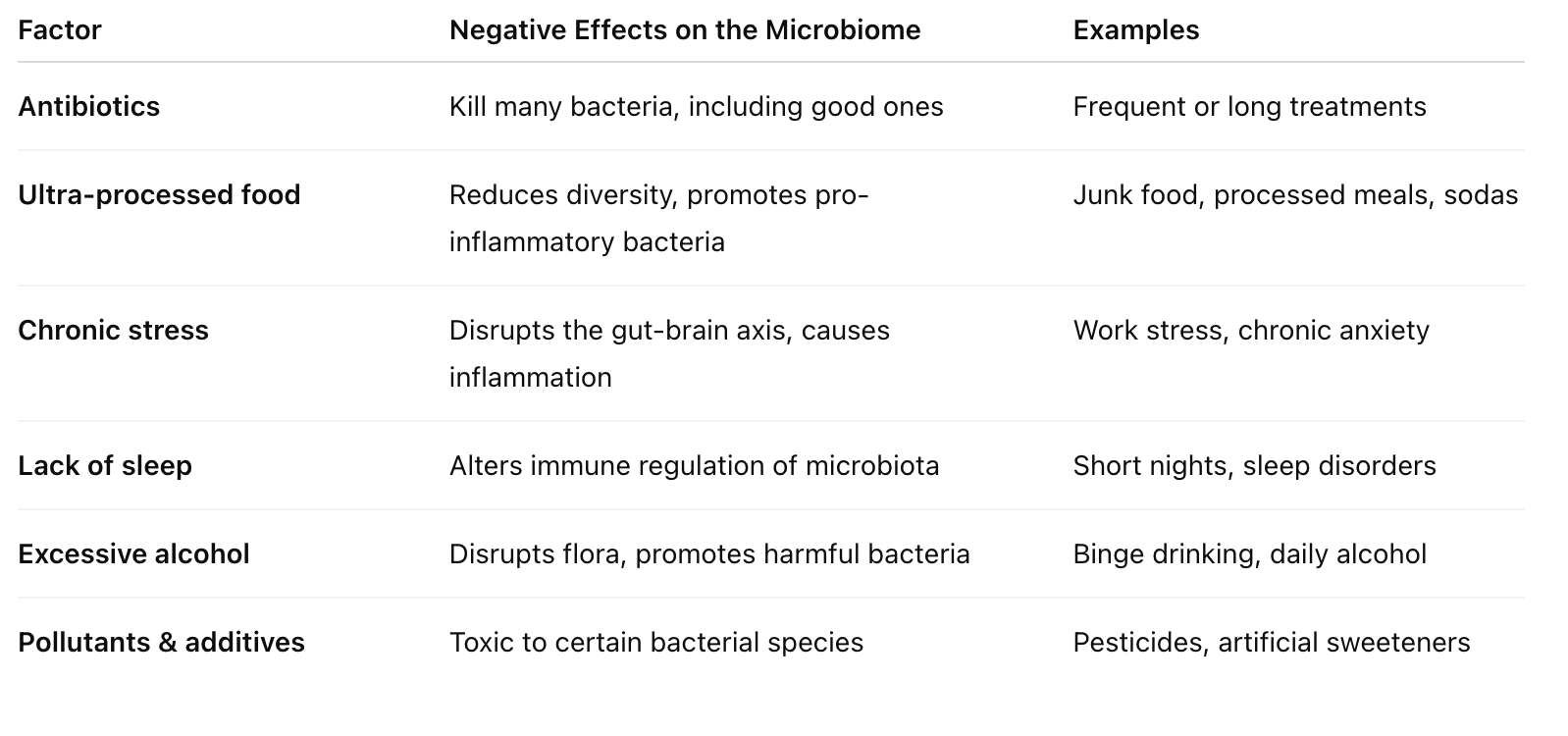Gut Microbiome: Your Invisible Ally (or Enemy)
Did you know your body hosts billions of microorganisms that influence digestion, immunity… and even your mood?
This microscopic world is your gut microbiome. Acting as a true conductor of your health, it can be a powerful ally, or, in case of imbalance, a silent enemy.
Let’s dive into this fascinating and often overlooked universe.
What is the microbiome?

The term microbiome refers to all the microorganisms living in a specific environment of the human body, such as the skin, mouth, lungs… or intestines!
These microorganisms live in symbiosis with us and often play a crucial role in our health.
When we talk about microorganisms in a microbiome, we’re referring to living microscopic organisms, invisible to the naked eye, including:
- Bacteria
- Viruses
- Unicellular fungi (like yeasts)
- Protists (single-celled organisms with a nucleus)
- Sometimes also archaea (primitive microbes)
What is the Gut Microbiota?
The gut microbiota resides in our intestines, mainly in the colon. It’s often referred to as the "intestinal flora."
In an adult, the gut microbiota includes about 10 to 100 trillion microorganisms, about as many or more than the total number of human cells in the body.
Each person’s composition is unique
The gut microbiota plays several essential roles:
- Digestion: It helps break down complex foods (especially plant fibers) that the body cannot digest alone, producing essential nutrients and vitamins.
- Immunity: It educates our immune system to distinguish between harmful and harmless agents. It also prevents the colonization of pathogenic bacteria by producing antimicrobial substances.
- Mental health: Through the gut-brain axis, the microbiome can influence mood and mental health disorders.
- Overall health: It affects metabolism, helps regulate weight, glucose, and lipids, and may be involved in diseases when imbalanced.
Symptoms of a Microbiome Imbalance
An imbalanced microbiome, known as dysbiosis, can have multiple impacts on health affecting not only the digestive system but the entire body.
Digestive disorders
Gas, bloating, diarrhea, constipation, abdominal pain, and poor nutrient absorption.
Weakened immunity & frequent infections
Dysbiosis weakens the immune system, making the body more vulnerable to infections (colds, UTIs, opportunistic diseases).
Allergies & food intolerances
Dysbiosis is linked to an increase in allergies (asthma, skin rashes) and food intolerances, as the body reacts more strongly to certain foods.
Weight gain
An imbalanced microbiome influences calorie absorption, fat storage, and appetite regulation contributing to weight gain.
It can also cause many other symptoms…
Chronic fatigue, acne, urinary tract infections, joint/muscle pain, and infertility may also be linked to dysbiosis.
Positive Factors – What Helps a Healthy Microbiome

Negative Factors – What Harms the Microbiome

How to Restore the Gut Microbiome?
Researchers have found that people living under the same roof, even if unrelated, share a more similar microbiome than family members living apart.
This proves that diet and lifestyle have more impact than genetics!
You can directly influence your microbiome, regardless of your genetic background.
Key Takeaways
Your lifestyle and diet have a direct, powerful impact on your microbiome. It’s never too late to improve it!Even after disruptions (e.g., antibiotics, illness), the microbiome can rebalance itself with good habits.Microbiome Testing
A gut microbiome test analyzes the composition of bacteria and other microorganisms in your gut usually from a stool sample.
The test measures bacterial species diversity and identifies which bacteria, fungi, viruses, and other microbes are present and in what proportions.
Results are compared with healthy or pathological microbiome profiles to help interpret anomalies.
This test can help detect potential imbalances and allow action through:
Personalized nutrition and care: Tailoring your diet or taking targeted probiotics to rebalance your microbiome.Prevention: Spotting imbalance before disease or digestive issues appear.Monitoring progress: Evaluating the impact of lifestyle changes, treatments, or diets on gut health.Different Testing Methods
Microbiome tests rely on DNA or RNA technologies.
- DNA (16S, shotgun): Shows who is present and what they might
- RNA (metatranscriptomics): Reveals what they are actually doing at a given time.
🧬 1. 16S rRNA Sequencing
Targets a gene found in all bacteria (16S rRNA), identifying dominant bacterial genera in the sample.

Sequences all DNA in the sample, identifying all species (bacteria, viruses, fungi, etc.) and estimating their relative abundance.

🧬 3. Metatranscriptomics
Analyzes microbial RNA to assess real-time gene activity.

Summary Table
Conclusion
Taking a microbiome test gives you a detailed snapshot of your gut health, useful for prevention, understanding, or supporting digestive, immune, or metabolic issues. It’s a powerful tool to personalize your lifestyle and nutrition.
For Lucis members: your at-home gut test
At Lucis, we believe in empowering you to take control of your health. That’s why we’ve carefully chosen a gut microbiome test that combines reliability, simplicity, and real actionable insights.

Why this one?
Digestion, immunity, energy, it covers it all.
Among all available methods, 16S rRNA sequencing (SR16) stands out. It delivers a clear picture of your gut microbiome and turns complex data into simple, practical, and personalized recommendations.
- Easy to use at home, just a simple sample collection, no need for medical visits
- Fully confidential and based on the latest scientific research
- Results explained in everyday language, with practical advice you can follow immediately
- Perfect for tracking your progress over time and adjusting your lifestyle accordingly
🎁 Only for Lucis members — discover it here 👇
| Get My Microbiome Tested |

